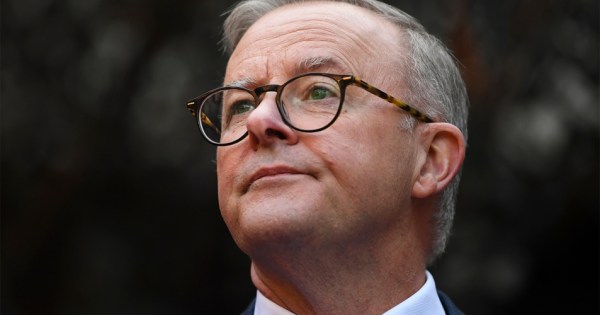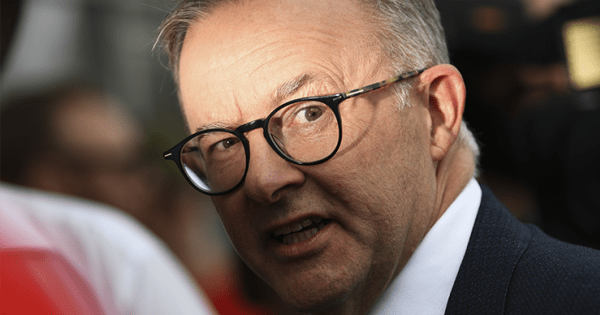Don
Boredwalk reports that Terry McCrann was the only commentator to ping NAB
boss Jon Stewart this morning for “spinning” the downgrade.
While everyone agreed that the honeymoon Stewart had with the
investment community was over, McCrann spotted the glossing over of the
real situation when Stewart said second half earnings would be down 10%
to 15% on the March half of this year when earnings of $1.85 million
were announced.
This McCrann pointed out was up to 18% to 23% per cent down on the
September half figure from last year, which is the proper basis for
analysis.
Which, in the midst of a very good industry wide outlook (even with a
slowing housing market) shows how badly the NAB does its most basic
business, banking. And while most commentators got stuck into the NAB,
most comment also missed the points raised by McCrann, which illustrate
the depth of the problems left by Charles Allen, Frank Cicutto and the
rest of the board.
In fact there is every reason why shareholders should call for more blood on the boardroom floor.
It’s now easy to see why Cathy Walter had to go. Regardless of her
being a ‘boardroom terrorist’ or a very nice person and a competent
board member, she was on the audit committee along with others, and
that’s the key board committee that oversaw the NAB’s operations.
But it would be churlish to pin everything on the audit committee. The
NAB’s problems are so widespread and so endemic and ‘cultural’ that the
entire board (except John Thorn, who is too recent a joiner) deserves
to be criticised for being asleep at the table.
They’ve allowed costs to grow faster than income. And that’s the story
from the profit warning that a lot of commentators missed. And what the
problems remain, No wonder Don Argus is trying to get his ‘boy’ up as a
director. With Frank on the board, corporate managements can sleep
tight in the knowledge that Frank won’t have a clue what’s going on.
This is part of what Crikey reported in May after the NAB’s first half
result:
“In fact Frank Cicutto and Charles Allen, the departed CEO and Chairman
respectively, and all those juvenile hissy fits between Cathy Walter
and the Graeme Kraehe-led gang of seven, have clouded what a miserable
job they’ve done in driving the bank forward, building value and
performing these past 18 months.
The ANZ, St George and Westpac, with David Murray’s CBA on a sort of
‘trustwatch’, are streets ahead of the NAB in the way the various arms
of those banks are performing, the way assets are being worked,
interest margin compression is offset elsewhere and the way employees
are obviously performing.
Let’s look at some indicators. While returns on equity and assets look
not too bad at above 18 per cent and around one per cent respectively,
the better indicator is the cost to income ratio. I know each bank
complains that the others measure their’s differently, but in essence
its a fairly standard measure.
So what how has the NAB gone? In March 2003, the Cost To Income ratio
was 47.3% with a major factor the underperformance of the MLC-based
wealth management business because of the slump in equity markets. Six
months later by September 2003 and the Cost to Income Ratio had risen
to 49.6%, despite a rebound in equity markets helping wealth management
and improving income levels. Move forward to March this year and
despite the higher equity markets and the housing boom, problems
elsewhere in the bank, especially in Europe, drive the Cost to Income
Ration up to 50.9%.
In effect 18 months of going backwards, while Westpac and ANZ have both
knocked their figures lower in the same time. Now that’s as good an
illustration of the way the board and senior management of the NAB have
lost the plot.
When Frank Cicutto took over from Don Argus as CEO in the late 90’s he
inherited a bank where the overall Cost To Income Ratio was just under
the 50% mark. Essentially that means for the past five years, there has
been no significant improvement in the overall efficiency of the NAB.”
And that’s the reality of what John Stewart has to work with. The first
thing should be selling off the underperforming European assets and
giving the money back to shareholders after rebalancing the bank’s
weakened capital structure.
Then those underperforming Bank of New Zealand businesses should be looked at.
It might be nice for the CEO to talk about 12 to 24 months, but the
realities of that timeframe is that by the middle of 2006 or
thereabouts the NAB’s financial performance will be no better than when
Frank Cicutto succeeded Don Argus in 1999.
That is an appalling situation and yet the current chairman, Graham
Kraehe, who has been a director for the past seven years or so, is
being allowed to cling to power until September next year when St
Michael (as Chanticleer terms him in the AFR) comes on board.







Crikey is committed to hosting lively discussions. Help us keep the conversation useful, interesting and welcoming. We aim to publish comments quickly in the interest of promoting robust conversation, but we’re a small team and we deploy filters to protect against legal risk. Occasionally your comment may be held up while we review, but we’re working as fast as we can to keep the conversation rolling.
The Crikey comment section is members-only content. Please subscribe to leave a comment.
The Crikey comment section is members-only content. Please login to leave a comment.